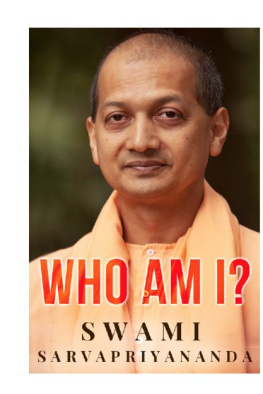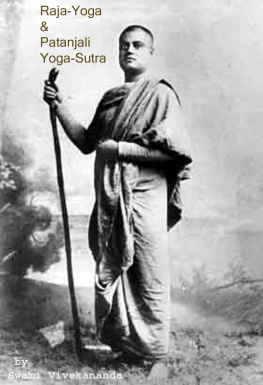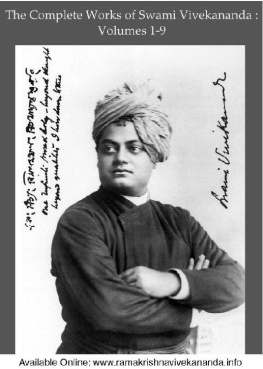Swami Vijayananda - Avadhoota Bhagawan Nityananda
Here you can read online Swami Vijayananda - Avadhoota Bhagawan Nityananda full text of the book (entire story) in english for free. Download pdf and epub, get meaning, cover and reviews about this ebook. year: 2021, publisher: Swami Vijayananda, Swami Nithyananda Ashram , Bevinkoppa, genre: Detective and thriller. Description of the work, (preface) as well as reviews are available. Best literature library LitArk.com created for fans of good reading and offers a wide selection of genres:
Romance novel
Science fiction
Adventure
Detective
Science
History
Home and family
Prose
Art
Politics
Computer
Non-fiction
Religion
Business
Children
Humor
Choose a favorite category and find really read worthwhile books. Enjoy immersion in the world of imagination, feel the emotions of the characters or learn something new for yourself, make an fascinating discovery.

- Book:Avadhoota Bhagawan Nityananda
- Author:
- Publisher:Swami Vijayananda, Swami Nithyananda Ashram , Bevinkoppa
- Genre:
- Year:2021
- Rating:5 / 5
- Favourites:Add to favourites
- Your mark:
- 100
- 1
- 2
- 3
- 4
- 5
Avadhoota Bhagawan Nityananda: summary, description and annotation
We offer to read an annotation, description, summary or preface (depends on what the author of the book "Avadhoota Bhagawan Nityananda" wrote himself). If you haven't found the necessary information about the book — write in the comments, we will try to find it.
Avadhoota Bhagawan Nityananda — read online for free the complete book (whole text) full work
Below is the text of the book, divided by pages. System saving the place of the last page read, allows you to conveniently read the book "Avadhoota Bhagawan Nityananda" online for free, without having to search again every time where you left off. Put a bookmark, and you can go to the page where you finished reading at any time.
Font size:
Interval:
Bookmark:


 - Swami Vijayananda
- Swami Vijayananda|| Namo Nityanandaya ||
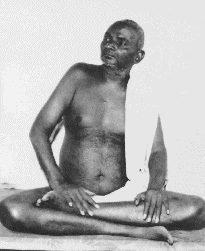



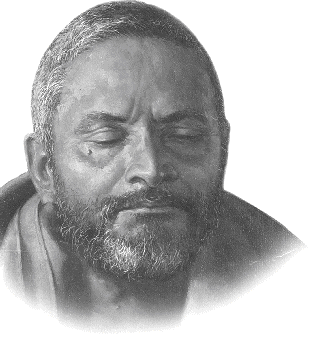

Sivadas Raghava, Chennai

To Satyaroopa Bhagawan Nityananda where all the five great elements of Nature appear in the beginning of Srishti (creation), stay steady during the phase of Sthithi (maintenance) and merge during the phase of Pralay (destruction).
To Jnanaswaroopi Bhagawan Nityananda from whom knower, knowledge, cause, effect and process evolve.To Daya Sagar Avadhoota Parabrahma Nityananda, the endless ocean of mercy,who blesses all creatures with showers of blissful drops of nectar of truth.
Swami Vijayananda iiiBhagawan Nityananda is Nirvikalpa, Parabrahma, Avadhoota, Aroodha and Chidksh. He is supreme being. We worship God in different forms such as Brahma, Vishnu and Maheshwara by whom The cosmic functions of creation, maintenance and destruction are carried out.
The supreme being or supreme soul transcends everyone and everything in this universe. So it is called Brahma. Supreme being is omnipresent and is called Vishnu. The same auspicious supreme being is also called Maheshwara. The supreme being with complete bliss is called Nityananda.
Nityananda is a Devatmoorti to all. He is Atma Tatva, ultimate truth of the soul. He is the energy in each divine thought and deed. His Devotees with His divine influence become desirous of salvation. They have thirst for supreme knowledge (Atma Jnana). Lord Nityananda has no disciple, say some, but many people were transformed into saints in His divine company and under His guidance. Through them He has propagated Siddha Yoga. Prominent saints among Nityananda devotees are Tulasi Mt, Janananda Swami, Saaligrama Swami, Muktananda Swami, Govinda Swami, Mouni Baba, Karunananda Swami, Balayogi Karunakar Swami, Mahabal-ananda Swami, Sadananda Padiyar Swami, Kutti Rama Swami, Rajayogi Karim Pheer, Shankargurudas Swami, Vrindavana Swami, Gopal mama, Atmananda Swami and Puttur Ajja.
To attain the ultimate goal in life, one should get wisdom of self-realization (Atma Jnana) and this cannot happen with mere external worship.
na vhanam naiva visarjanam v
pushpni patrni katham bhavantidhynni mantrni katham bhavantisamsamam chaiva shivrchanam cha ||
The above verse from 'Avadhoota Geeta' says, There is no invocation prior to worship nor casting offpost the worship. How can there be flowers, leaves, meditation and chanting of mantras? How can there be worship of Shiva, who is identity in non-difference?
True worship happens on attaining the knowledge of the soul (Atma Jnana). Soul is also called as awareness. This awareness is supreme being, purity and ecstasy. Soul is akart (non-doer), abhokt (one who does not experience worldly pleasures) and asanga (does not need anyone's company).
What is the form of supreme being? It is explained in detail in Prashnopanishad. At first the form of supreme being can be compared to a distant hill. Devotees who want to visit the hill from their place come via nearest route. The hill ranges appear in different shapes from different directions. In one direction it looks like a barren hill, in another direction it might appear like a fort with assembled rocks and to some it appears like a stair of steps that leads to the temple atop the hill. Hill has a base which cannot be seen with human vision. Its existence is definite but nobody can see it. That is awareness. It is visible only through wisdom. Entire hill cannot be seen. Only a part of it will be visible at any point of time. Sanctum sanctorum is in the temple. In the idol installed, supreme being is hiding. Yet the supreme being pervades the entire hill and even transcends it. (To make us understand this, Bhagawan Nityananda constructed temple and caves inside Kanhangad fort. It encapsulates the principle of the supreme being.)
Gradually trees and plants on this hill dry up. Rocks roll over. Everything perishes sooner or later. What is visible right now might appear true and imperishable but in the end everything perishes including the eyes that are a witness to the scenery on the hill. Only the supreme soul is immortal. Rest everything has to merge with it.
Whole universe is like a Pippala Tree (peepal or Ashwattha tree) and supreme being is the root of this tree. It is a 'adhov
shkham' tree, meaning a tree with downward facing branches and root at the top.
One who has consumed the delicious fruits of this Pippala tree (experienced the knowledge) is Pippalda.
Rishi Pippalda was an ancient Indian Vedic sage and philosopher. His answers to six questions of his disciples constitute the Prashnopanishad.
The Supreme being incarnated in human form as Bhagawan Nityananda for the welfare of people. In His 'Saguna Roopa' He showed His Leelas through which He taught many values to ignorant minds. He stressed the importance of equality by vehemently resisting the attitude of discrimination.
Nityananda Baba has no father, mother or teacher. He did not worship any deity because He Himself is God. He did not need to pray or meditate. He incarnated in the form of a teacher (Gurudeva). He is the origin of the universe, He is the universal form, He is the owner of the universe and He is the soul of the universe. He even transcends the universe. No matter how much we write to describe Him it is just not enough.
Merciful Bhagawan Nityananda showed His childlike playfulness on a platform near our house in Manjeshwar. My grandfather had brought Bhagawan Nityananda to Manjeshwar in his vehicle. At the time I was not born yet. I have grown up listening to Leelas of Nityananda Baba. Manjunath Acharya, a devotee of Bhagawan, was fortunate enough to have been blessed with a vision of His former incarnations. His son Anand Acharya shared several miraculous incidents with me. Currently he is living in Puttur.
Shri Vitthal Shetty of Ambalpadi in Udupi had served Nityananda Baba in Ganeshpuri for several years. Bhagawan initiated and named him as Vijayanand Swami and sent him to Belagavi. He established Nityananda Ashram in Mallur, Belagaviand Shindogi. He was surprised to know that my name is also Vijayanand. By his blessings I stayed at Mallur Ashram for two years. I am fortunate to know more about Bhagawan Nityananda from him. He has authored many books on Nityananda Baba.
This book has been written after a deep study of several books and interactions with devotees who have personally witnessed the Leelas of Bhagawan Nityananda. Books that helped me know more about Him include 'Nityananda Leelamrita' by Gopalkrishna Hosadurg, 'Nityananda : The Divine Presence' by Captain M. U. Hatengdi, 'Sadguru Nityananda' by D. V. Ravindran, 'Chidksh Geeta' by Tulasi Amma,'Karuna Sagar Sadguru Karunananda' by Gopalji and 'Chit Shakti Vilas' by Muktananda Swami.
Font size:
Interval:
Bookmark:
Similar books «Avadhoota Bhagawan Nityananda»
Look at similar books to Avadhoota Bhagawan Nityananda. We have selected literature similar in name and meaning in the hope of providing readers with more options to find new, interesting, not yet read works.
Discussion, reviews of the book Avadhoota Bhagawan Nityananda and just readers' own opinions. Leave your comments, write what you think about the work, its meaning or the main characters. Specify what exactly you liked and what you didn't like, and why you think so.


